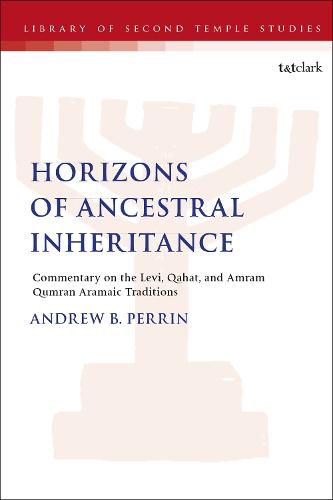Readings Newsletter
Become a Readings Member to make your shopping experience even easier.
Sign in or sign up for free!
You’re not far away from qualifying for FREE standard shipping within Australia
You’ve qualified for FREE standard shipping within Australia
The cart is loading…






In this study of the Aramaic materials at Qumran, Andrew B. Perrin examines the Aramaic Levi Document, Words of Qahat, and Visions of Amram, showing how they exhibit a concentration of priestly concerns/knowledge and exploring new models for evaluating their potential textual or traditional connections. The Aramaic texts among the Dead Sea Scrolls are among the most understudied items in the Qumran collection, and with open questions posed around their origins, transmission, and reception in and beyond the Second Temple period, these writings provide both new materials and fresh insight into the thought, identity, and practice of ancient Judaism.
Perrin's analysis includes a new transcription, critical notes, and translation of the Aramaic Levi, Qahat, and Amram fragments based upon the latest digital images. He pairs them with a comprehensive commentary on the conceptual elements, codicological features, and cultural contexts of the materials, and he concludes with a fresh synthesis regarding the textual formation of these Aramaic, priestly pseudepigrapha as a "constellation" of texts within a larger world or scribal-priestly activity and traditions.
$9.00 standard shipping within Australia
FREE standard shipping within Australia for orders over $100.00
Express & International shipping calculated at checkout
In this study of the Aramaic materials at Qumran, Andrew B. Perrin examines the Aramaic Levi Document, Words of Qahat, and Visions of Amram, showing how they exhibit a concentration of priestly concerns/knowledge and exploring new models for evaluating their potential textual or traditional connections. The Aramaic texts among the Dead Sea Scrolls are among the most understudied items in the Qumran collection, and with open questions posed around their origins, transmission, and reception in and beyond the Second Temple period, these writings provide both new materials and fresh insight into the thought, identity, and practice of ancient Judaism.
Perrin's analysis includes a new transcription, critical notes, and translation of the Aramaic Levi, Qahat, and Amram fragments based upon the latest digital images. He pairs them with a comprehensive commentary on the conceptual elements, codicological features, and cultural contexts of the materials, and he concludes with a fresh synthesis regarding the textual formation of these Aramaic, priestly pseudepigrapha as a "constellation" of texts within a larger world or scribal-priestly activity and traditions.